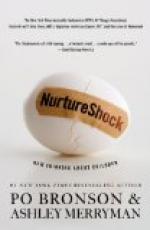|
This section contains 971 words (approx. 3 pages at 400 words per page) |

|
Chapter 10 and conclusion Summary and Analysis
Chapter 10: In 2007, a scholarly paper was published that found that 'baby videos' actually reduced infants' vocabularies. Parents believed that the videos were giving them an advantage, and the Baby Einstein company claimed that exposure to numerous languages would help children acquire multiple languages later. But research by Patricia Kuhl at the University of Washington showed that making a commitment to one language early on—not keeping the options open—actually gave children a better foundation for learning other languages. Research showed that children learn language by using it, not by being exposed to it, and studies have also shown that children learn language when speakers interact with them—better than just from hearing a recording.
Bronson says that the received wisdom is that children from verbal homes will develop better language skills. "The basic...
(read more from the Chapter 10 and conclusion Summary)
|
This section contains 971 words (approx. 3 pages at 400 words per page) |

|




